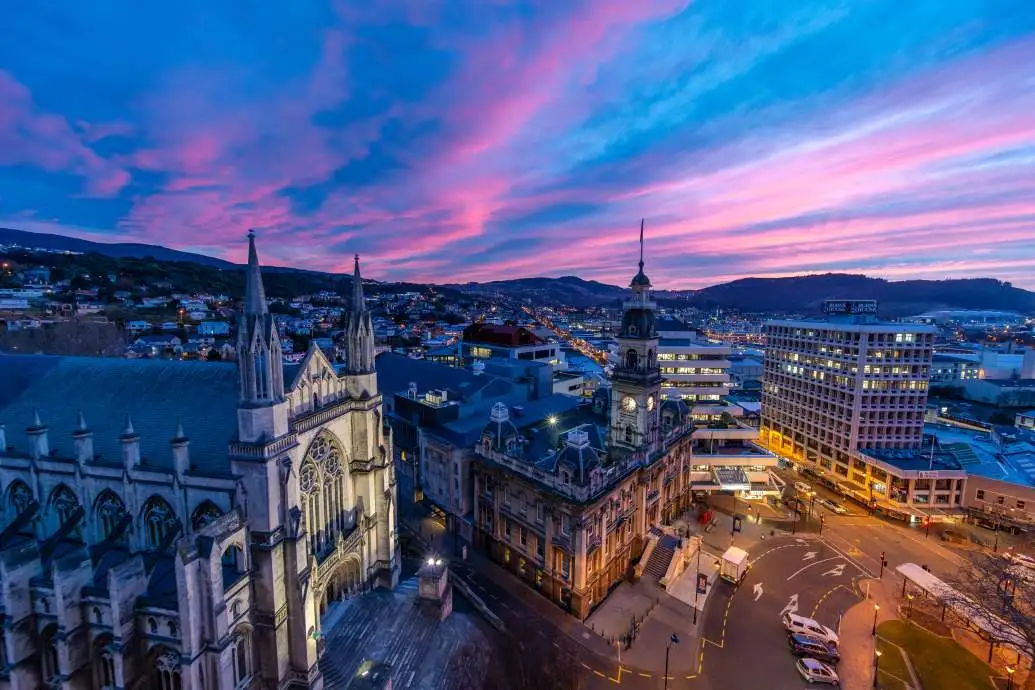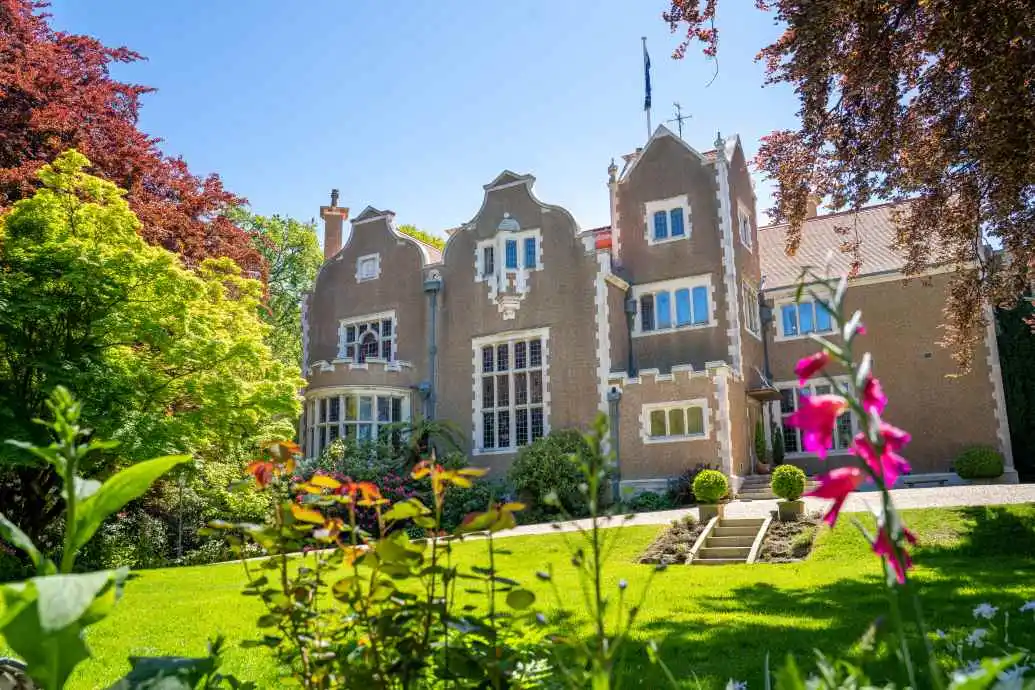Dunedin's history is on display in stunning architecture locals see every day, often unaware of the stories of success, scandal, innovation and adventure that occurred within the bricks and mortar. Take a closer look at some of the city's best examples of built heritage.

Dunedin Railway Station
Described as an 'outstanding monument of Edwardian-era architecture in New Zealand’, as well being regarded as the most photographed building in the country, the Dunedin Railway Station was constructed in 1906.
Designed by George Alexander Troup, the building is a testament to the skills of its stone masons, the tile makers and creators of its stained-glass windows. The building now contains the New Zealand Sports Hall of Fame and the Otago Art Society’s gallery.

The Octagon
The Octagon, Dunedin's central plaza, marks the city's central business district and is home to some of the most historic buildings in the country such as the Dunedin Municipal Chambers and St Paul's Cathedral.
Completed in 1880 and designed by R. A. Lawson in 1878, the Dunedin Municipal Chambers have been altered throughout its standing including the removal and replacement in 1919 of the building's front steps and its bell tower in 1963.
Completed in 1919, the Cathedral was designed by Sedding and Wheatly and replaced the Parish Church of St Paul.

University of Otago Registry Building
The competition for the design of the University of Otago Registry Building was won by Maxwell Bury of Nelson and construction of the building was completed in 1879.
An extension to the building and additional wing were added to the structure in 1883 for courses of the medical, chemistry and mining profession.
The registry is most famous for the clock tower that stands out like a beacon over the University. Otago University is located slightly to the NE of the city centre and the clock tower building centred directly across from St David Street, on the Leith Walk.

Larnach Castle
New Zealand’s only historic castle is a must-see for anyone wanting to know Dunedin better. William Larnach commissioned its construction in 1871. The undeniable beauty of the site high above the harbour is complemented by the fascinating stories of the Victorian castle’s skilled creators, those who lived there and its rediscovery and restoration.
The castle’s 14-hectare garden and grounds are recognised as a Garden of International Significance, and the Ballroom Café serves delicious lunches and high teas.

Olveston Historic Home
Olveston is a genuine time capsule where little has changed inside the house since it was occupied as a beloved family home.
A ‘must visit’ for lovers of art, heritage and history, this 35-room Edwardian-era mansion is lavishly furnished with exotic artefacts, prized artworks, antique furniture, ceramics and statues from around the world.
It was designed for a one of Dunedin’s most prominent businessmen, philanthropists and collectors during the early 1900s. Anyone who appreciates skilled workmanship will be vastly impressed with every aspect of the buildings design. The house and its ‘Garden of National Significance’ rest within the city’s Green Belt within walking distance of Dunedin’s Octagon.

Toitū Otago Settlers Museum
A museum, but not as you know it. Toitū expertly mingles the early history of Dunedin’s settler population with installations from more recent times, complete with trolleybuses and vintage caravans. The interactive exhibits include a recreated settler’s house and ships cabin, which offer a fascinating insight into the conditions faced by many in the early years of the Dunedin settlement.
Opened in 1908, the museum is housed in the original Edwardian galleries, an Art Deco former New Zealand Rail building New Zealand Rail Road Transport Building and a modern entrance foyer complete with train engine, café and gift shop.

Speight's Brewery
Speight’s have been brewing fine ales since James Speight, Charles Greenslade and William Dawson set up the Speight’s brewery in Dunedin in 1876. Speight’s gained international recognition by winning the fledgling brewery award at the Sydney International Exhibition and became New Zealand’s largest brewery in 1887. Speight’s provides tours of the brewery and is joined by the Speight’s Ale House, where visitors can enjoy the ‘Pride of the South’s’ brew and large, hearty meals.

Dunedin Gasworks Museum
One of only three known preserved gasworks museums in the world, this is a significant local and world heritage site. While providing the city with the power of light, heat and cooking, the gas workers worked round the clock, experiencing explosion, changes in fuel and a few complaints from neighbouring households. Unique in New Zealand, the museum provides new insight into everyday Dunedin life from the 1860s to the 1980s.

Dunedin Gaol
The Dunedin Gaol was the second Dunedin prison to be built and was completed in 1898. The structure was designed by John Campbell with a similar feel to London’s Scotland Yard.
The prison was constructed with superb detail and the contrasting red and pale exterior colours are an example of Edwardian neo-Baroque. You can experience guided tours of the gaol and there are even a couple of escape rooms on-site.

First Church of Otago
Completed in 1875, construction of the church began in 1867 on the back of R. A. Lawson’s architectural design. The gothic style of the church face was constructed with Oamaru stone and in 1873, Lawson sighted the spire had a lean and was too short and had to be dismantled and rebuilt. Louis John Godfrey carved the inside and outside of the building, which can be located on Moray Place.
The best way to do enjoy a heritage walk is with a knowledgeable guide, contact the ![]() Dunedin isite Visitor Centre to find out how or read more about heritage tours here.
Dunedin isite Visitor Centre to find out how or read more about heritage tours here.




